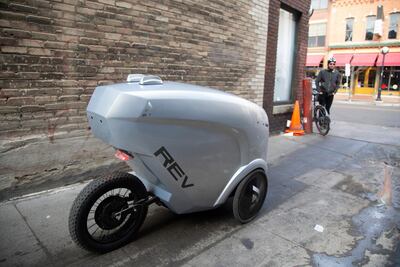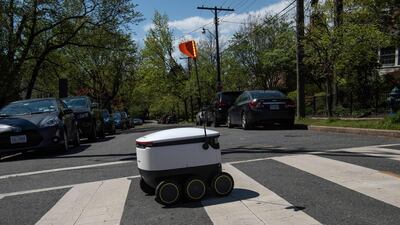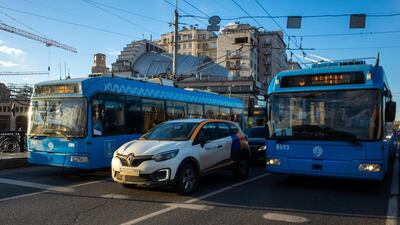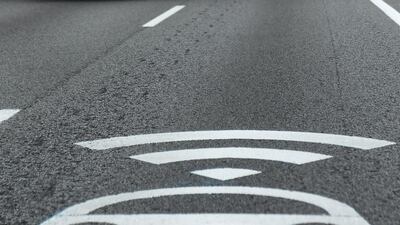Forget driverless cars, experts have predicted a future where our roads will have designated lanes just for robots.
The futuristic vision was laid out at the Gulf Traffic conference in Dubai on Monday.
Robots will deliver directly to the doorstep, and there will be significantly fewer private cars on the roads as cities rely increasingly on public transport.
Autonomous vehicles will also play a bigger role in everyday life.
Here are four ways our cities are changing:
Rise of the robots
"Robot lanes are already being introduced in the UK," said Lukas Neckermann, managing director of mobility firm Neckermann Strategic Advisors at the event.
“Groceries and mail are already being delivered by robots.”
He said lanes designated for robots could become the norm all over the world.
The conference also heard how robots were being used for home deliveries.
Last year, UK supermarket chains Tesco and Co-Op announced they would be using robot buggies to deliver orders of up to 10 kilogrammes in less than 15 minutes.

Less congestion
The recent trend of city centres being pedestrianised will continue as urban areas around the globe strive to reduce congestion.
“Countries across the world have already shown what can be achieved with good planning,” said Martin Tillman, director of strategic planning for infrastructure firm Aecom.
He said some cities had already made significant changes to their urban centres to make them more accessible to pedestrians and cyclists.
Large sections of Paris's centre are closed off to cars each weekend, while the city of Bogota in Colombia closes off many of its roads, only allowing access to pedestrians, runners and cyclists.
More than 1.7 million people turn out there each week to take advantage of more than 120 kilometres of roads that are closed to traffic.
Mr Tillman said there was still a challenge to make major cities including Dubai and Abu Dhabi, accessible to pedestrians, especially during the scorching hot summer months.
However, he said pedestrianisation in both cities was still a necessity.
“Not everyone is privileged enough to have access to a private car or can afford to take a taxi,” he said.
“You are still going to find people who have to walk even in the middle of the summer.
“There are ways around this, such as providing shading in certain areas.”
Road to nowhere
Cities that continue to build more roads to try to reduce the levels of congestion are fighting a losing battle, said Eugene Chao, a researcher into urban transport who has worked on projects with both the US and UAE governments.
“Building cities around cars only leads to a disastrous expansion of highways,” he said.
“Expanding the number of roads will only make the matter worse. It only leads to more and more congestion.”
Instead, governments should invest more in public transportation systems to encourage people to leave their cars at home, he said.
Some cities offer public transport services free of charge.
Kansas became the first large US city to adopt this policy when it dropped charges for public transport in late 2019.
Tallinn, the capital of Estonia, has also made public transport free.
Going green is not enough
Another transport expert said the future is one of cities with no private cars and that converting electric vehicles would not be enough to solve the world’s congestion problems.
"Even if you made every car on the road an electric one it wouldn't solve the issue," said Florian Lennert, head of mobility at Saudi Arabia's Neom, a $500 billion megaproject that has been called the next stage of the evolution of cities.
“There would still be issues around the size and volume of the cars on the road.
“We need to develop a city with no private cars and autonomous shuttles transporting people.”






